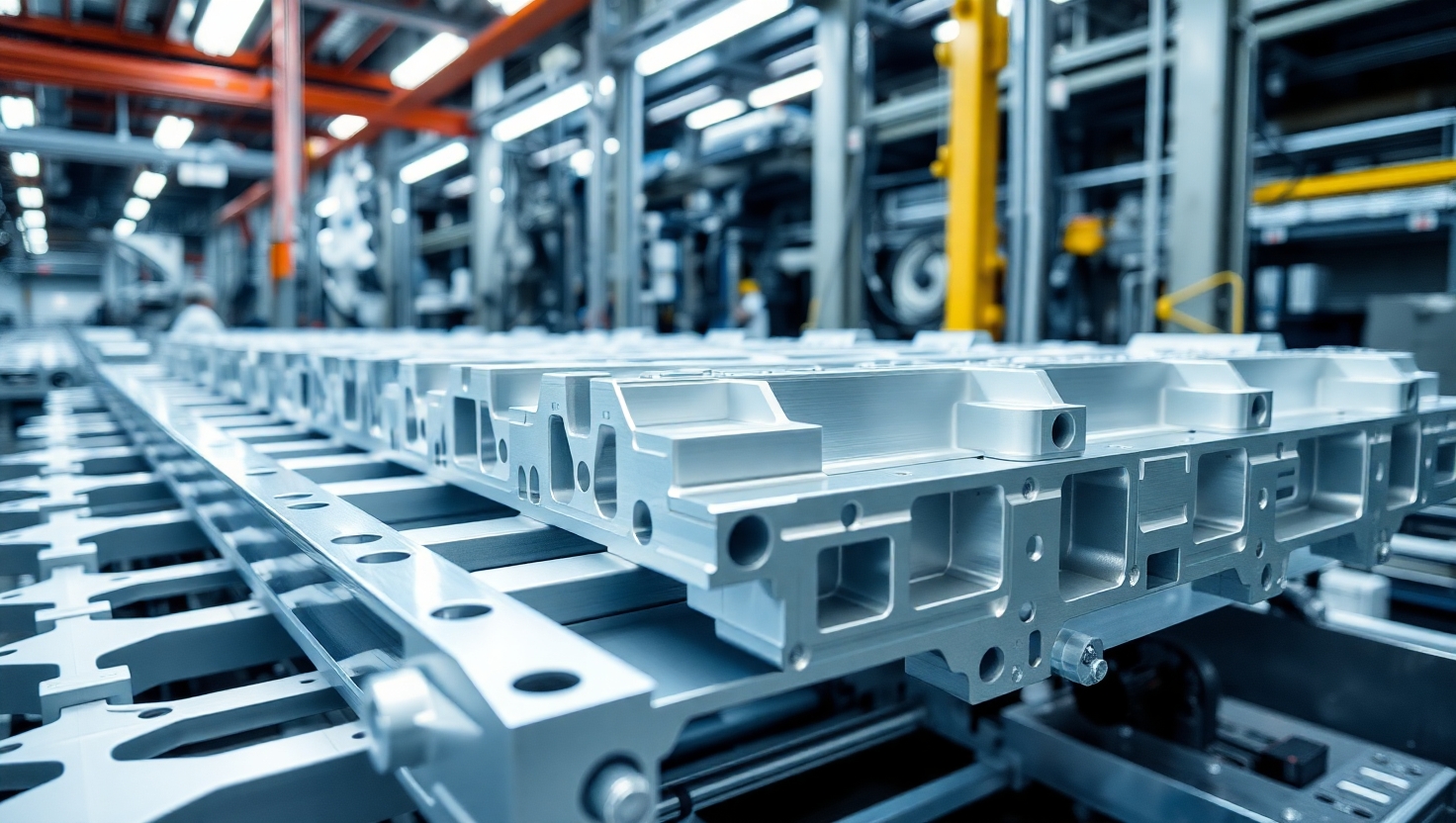Aluminium Extrusion for EV Battery Trays: A Growing Trend in 2025
Published by: ALUTimes | Date: July 15, 2025
Table of Contents
- Introduction
- Why EVs Need Advanced Battery Trays
- The Role of Aluminium Extrusion
- Material Benefits of Aluminium
- Design Flexibility with Extrusions
- Manufacturing Efficiency
- Real-World Examples
- Future Trends in 2025 and Beyond
- Conclusion
- Disclaimer
Introduction
As the global electric vehicle (EV) market rapidly grows, manufacturers are constantly looking for ways to improve battery packaging, reduce vehicle weight, and boost safety. In 2025, aluminium extrusion has emerged as one of the most viable solutions for producing lightweight, high-strength battery trays that meet the rigorous demands of EV platforms.
Why EVs Need Advanced Battery Trays
Battery trays are structural enclosures designed to hold the battery pack in EVs. They serve critical functions:
- Providing mechanical protection against impacts
- Enabling effective thermal management
- Preventing corrosion and moisture intrusion
- Supporting the vehicle’s structural integrity
Traditional materials like steel add unnecessary weight. With range anxiety still a concern, OEMs have turned to aluminium for a lightweight yet robust solution.
The Role of Aluminium Extrusion
Aluminium extrusion allows manufacturers to create long, uniform sections with complex geometries that are ideal for modular EV battery trays. Compared to casting or sheet metal, extrusion provides:
- Precise dimensional tolerances
- Reduced material waste
- Lower tooling cost and faster prototyping
- Integration of channels for wiring and coolant
Material Benefits of Aluminium
Why aluminium alloys (especially 6000 and 7000 series) are ideal for EV trays:
Corrosion Resistance: Prolongs life and maintains strength in road-salt or humid environments.
Thermal Conductivity: Enhances cooling of lithium-ion cells.
Recyclability: Aluminium is 100% recyclable, aligning with OEM sustainability goals.
Weight Reduction: 60% lighter than steel without sacrificing strength.
Design Flexibility with Extrusions
Aluminium extrusion enables design innovations that improve battery packaging:
- Integrating mounting points, cooling fins, and cable routes
- Snap-fit features for quicker assembly
- Modular designs for various EV platforms
Manufacturing Efficiency
EV OEMs benefit from faster, scalable production with aluminium extrusions. Common joining methods include:
- TIG and MIG welding
- Mechanical fasteners
- Friction stir welding (FSW)
Many extrusion suppliers provide pre-fabricated assemblies, reducing the need for in-house processing.
Real-World Examples
Global players like Tesla, BYD, Tata Motors, and Rivian are already leveraging aluminium extrusions in battery architecture. Notably:
- Tesla: Uses extruded aluminium trays in the Model 3 and Model Y platforms
- Tata Motors: Partnered with Indian extruders to supply battery housing for EVs in 2025
- BYD: Developed a blade battery with aluminium casing extrusions
Future Trends in 2025 and Beyond
- Use of multi-hollow profiles for improved stiffness
- Integrated thermal barriers in extrusion dies
- Hybrid material approaches—aluminium + composites
- Localized production with smart extrusion lines
Conclusion
In 2025, aluminium extrusion has established itself as the preferred solution for EV battery tray manufacturing due to its lightweight, customizable, and sustainable nature. As EV production scales up globally, suppliers who invest in extrusion capabilities are best positioned to serve this high-growth sector. Battery trays are more than containers—they are engineered structures, and aluminium is the material enabling next-gen designs.
Disclaimer
This content is for informational purposes only. Readers are encouraged to consult extrusion engineers and OEM technical guidelines before implementation.


1 thought on “Aluminium Extrusion for EV Battery Trays”